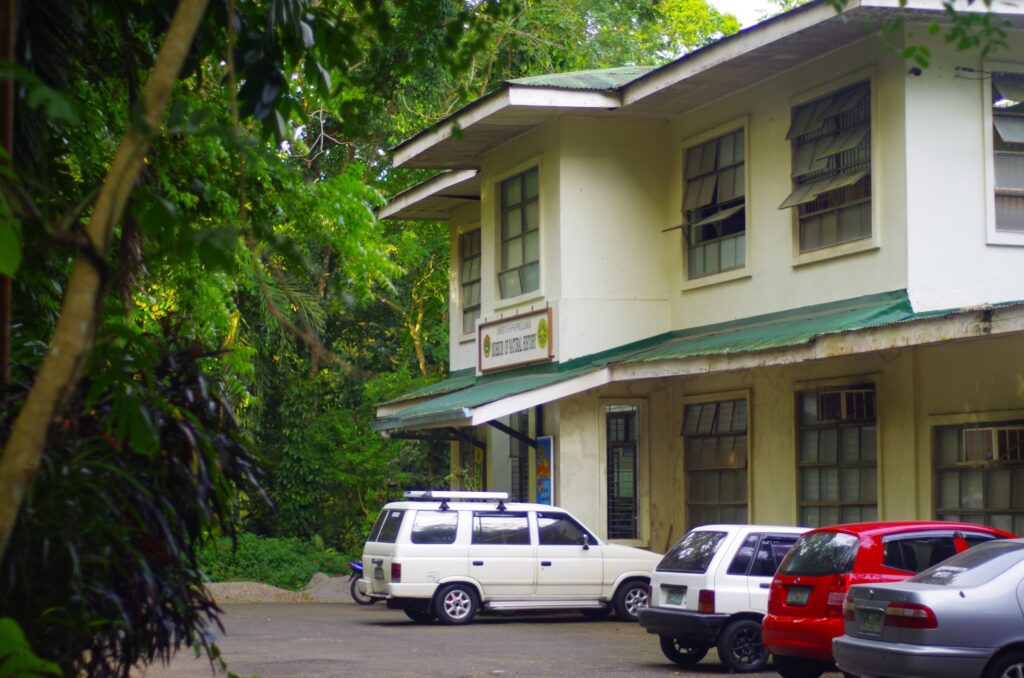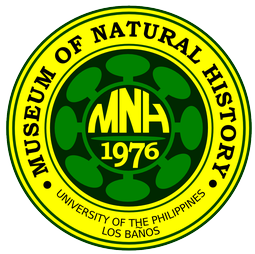About the Museum

The UPLB Museum of Natural History (UPLB MNH) is a university-wide unit dedicated to exploring, documenting, and preserving the Philippines’ biological diversity.
Its primary role is to safely maintain priceless and irreplaceable natural history treasures acquired through university-based research and collaboration.
Indeed, the UPLB MNH performs part of the University’s commitment to the advancement of world science while playing an active role in upholding the United Nations Convention on Biological Diversity.
The museum consists of preserved biological and zoological specimens, wood samples; by-products of microorganisms, and also thousands of living plants/trees maintained in a separate location. This museum also serves as a reference for the science and a center for documentation, research, and information.
It has a diverse collection of more than 250,000 preserved Philippine animals, plants, cultures of living microorganisms, and another biota that showcase the country’s rich biodiversity.
It houses most of the priceless collections of birds and small mammals of the late Dr. Dioscoro S. Rabor, considered as the Father of Philippine Wildlife Conservation; and has in its Hortorium, a diverse collection of living plants.
In its main building is an Integrated Biodiversity Exhibit. A multi-media diorama of Philippine flora and fauna and video presentations on biodiversity are special museum highlights. Exhibits feature, among others, the Philippine Eagle and other endemic birds the tamaraw and a number of small mammals such as forest rodents, terrestrial snails from Mt. Makiling, Philippine medicinal plants, various hard and soft-bodied fungi, marine life such as whales and dolphins, and many more.
Albeit meager funds, UPLB MNH continues to lead in biodiversity research activities in the country. It continues to implement its mandate on preserving and promoting its valuable resources – its hundreds of thousands of holdings of precious biological specimens, preserved records of life forms of the Philippines’ natural heritage.
The museum has under its niche banner programs several projects/studies on “Philippine Cave Biodiversity” and “Biodiversity of Small Islands in the Philippines,” with some funds coming from income generated from its visitors program, publication sales, provision of microbial cultures and scientific services such as identification of biological specimens.
Other research projects receive funding from the UPLB Basic Research Program, the National Research Council of the Philippines (NRCP), Department of Science and Technology (DOST), Commission on Higher Education (CHED), Philippine Council for Agriculture, Aquatic, Forestry, and Natural Resources Research and Development (PCAARRD), and other government institutions
The museum also have several collaborative endeavors with government and private (NGO and corporate) organizations and academic and research institutions abroad.
OUR INSTITUTIONAL STATEMENTS
Vision
A globally recognized repository of natural heritage and a center for research, documentation, information, and extension in biological conservation.
Mission
To explore, document, preserve, and curate Philippine natural history; and to generate and share knowledge and understanding to strengthen the protection, conservation, and sustainable use of biodiversity and the environment.
Core Values
We ensure that resources entrusted to us by the public—including collections, facilities, people, and funds—are put to best use and their states appropriately reported. We maintain an accountable, transparent, and stimulating environment conducive to integrity and professionalism.
We put integrity and excellence into our research, collections, publications, exhibits, and services. We also use the tools of science communication and biodiversity education to help nurture patriotic regard for our natural heritage among students and the general public.
We work with organizations and individuals from diverse cultures, academic disciplines, and perspectives in an environment of mutual respect, without regard for race, gender, religion, or politics.
We are committed to the ethical and equitable delivery of educational, scientific, and technical services to both the scientific community and the general public.
Goals
- Complete the Museum renovation project (Phase 1) by 2022
- Refurbish all collection rooms by Dec 2022
- Acquire a vehicle by 2022
- Acquire BOR approval of a proposal for a new building/complex by 2026
- Purchase state-of-the-art equipment (office, field and laboratory) by 2023
- Replace the collection room’s storage facilities, furniture and equipment for collections by 2024
- Implement an institutional Transparency Program by 2022
- Initiate specimen return program by 2022
- Implement a job/role audit of staff and curators by 2023
- Create a Manual of Operations and implement the Standard Operating Procedures by 2024
- Increase internal and external funding by 2026
- Pursue international and local linkages by 2023
- Institutionalize and implement international and local collaborations by 2023
- Attain memberships in local and international museum organizations by 2023
- Conduct a national summit/conference of Philippine natural history museums by 2026
- Partner with international organizations to co-host two or more international scientific gatherings by 2026
- Attain National Center for Cave Studies status by 2026
- Establish a “Friends of the Museum” program
- Publish at least 10 scientific knowledge products yearly starting 2022
- Establish the use of a standardized online collections database by 2022
- Implement an assets archival system for photos, videos, PDFs and other important documents by 2023
- Improve the online system for services by 2023
- Develop and use a computerized in-house records and monitoring system for communications, R and E, budget, supplies and property, and others by 2023
- Establish a virtual learning center by 2024
- Achieve international indexing of the in-house journal Laksambuhay by 2026
- Establish the museum brand and the respective guidelines by 2022
- Employ data analytics for online presence by 2022
- Establish a partner recognition program by 2022
- Produce new marketing and promotion collaterals and semi-technical publications by 2024.
- Create and deploy a new website by 2025
- Create an interactive mobile app by 2025
